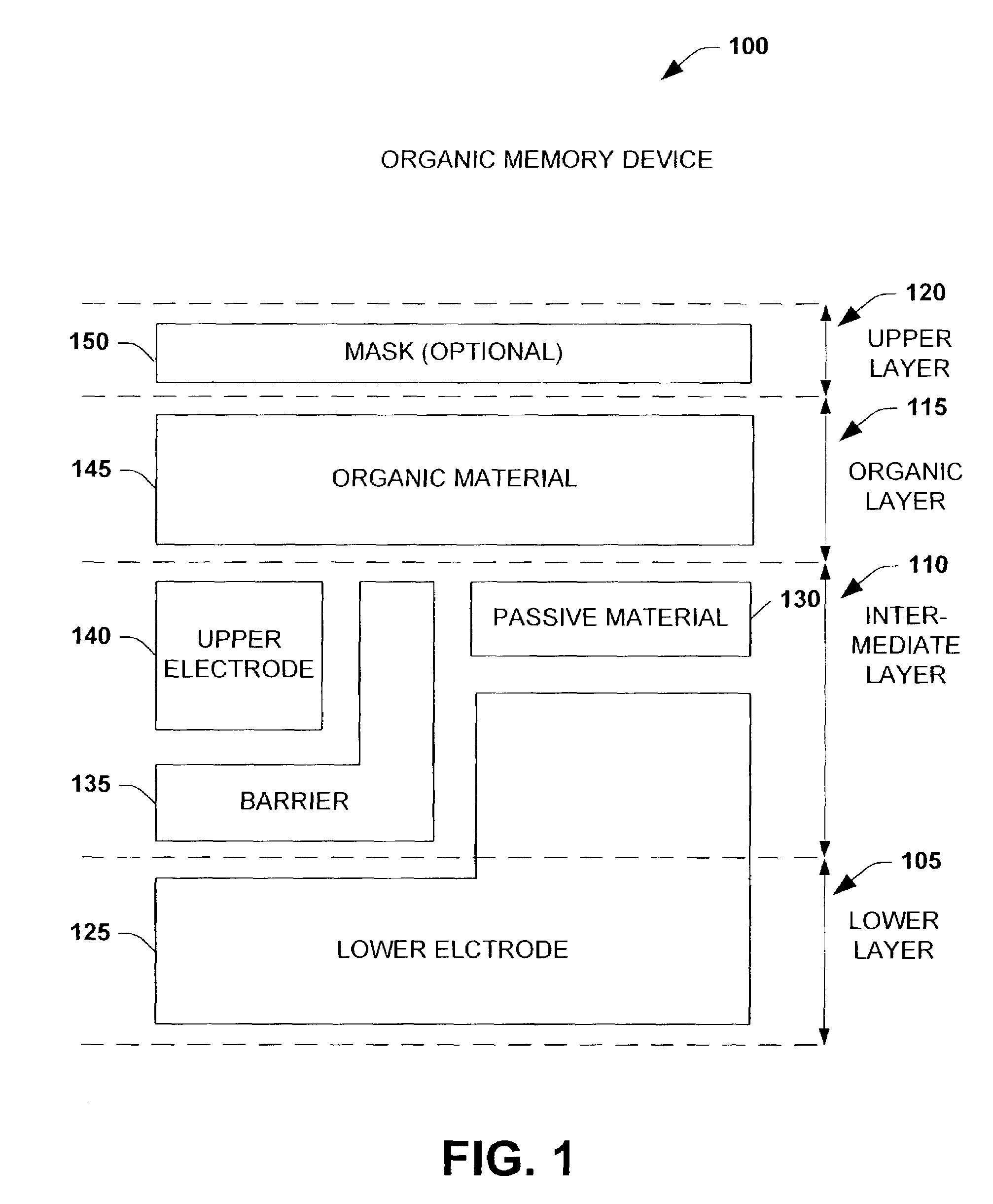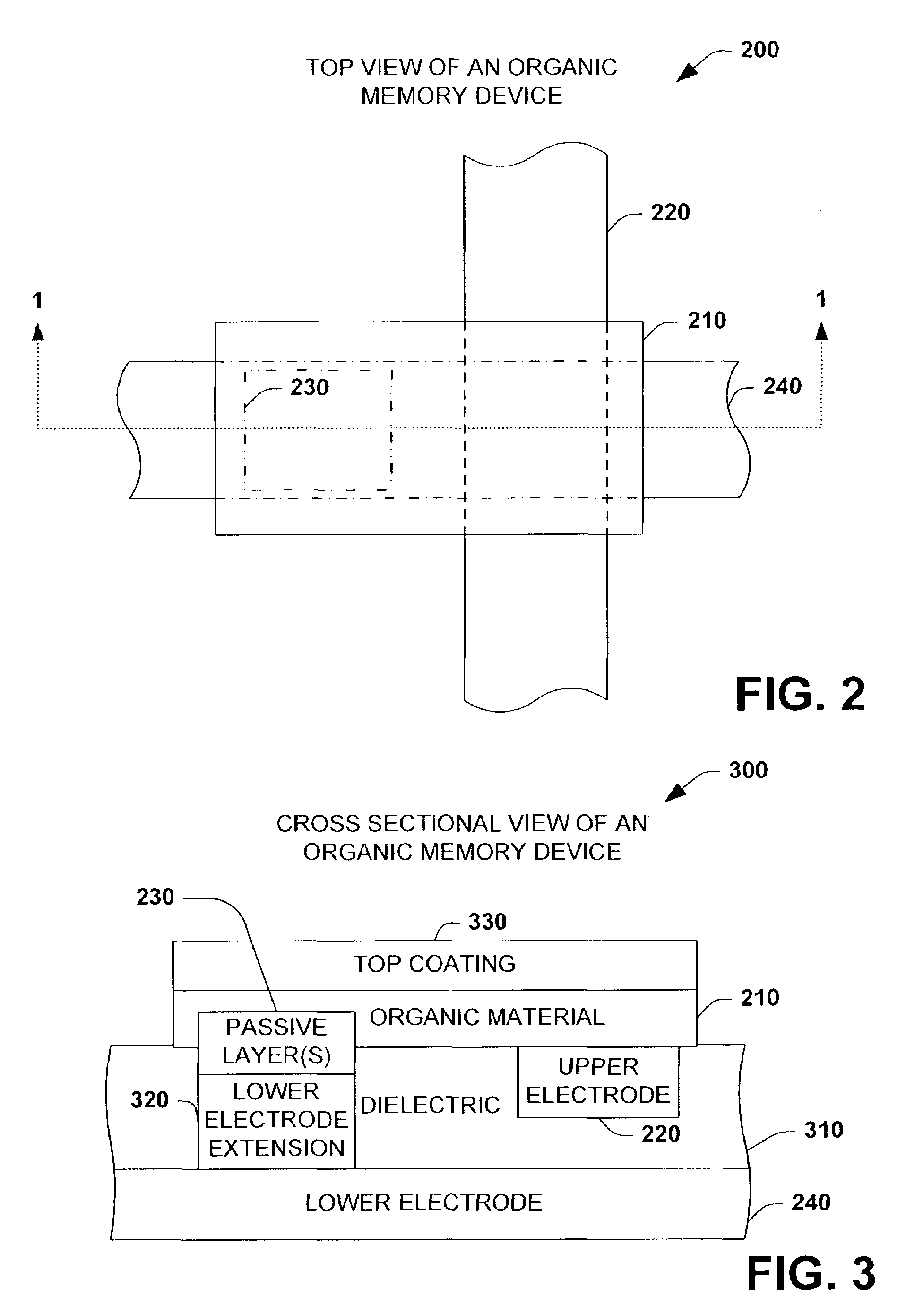Planar polymer memory device
a polymer memory and polymer technology, applied in thermoelectric devices, instruments, nanoinformatics, etc., can solve the problems of increasing the volume, use and complexity of computers and electronic devices, reducing the storage density of data, so as to facilitate the construction of high-density memory devices, short resistance/impedance switch time, and improved density and packing
- Summary
- Abstract
- Description
- Claims
- Application Information
AI Technical Summary
Benefits of technology
Problems solved by technology
Method used
Image
Examples
Embodiment Construction
[0034]The present invention provides a planar polymer memory device that can operate as a non-volatile memory device. A single cell memory component can be constructed with two or more electrodes, an electrode extension associated with at least one electrode, a passive layer, a selectively conductive medium operatively coupled to form an individual memory cell, and optionally a partitioning layer to facilitate programming and / or isolate memory cell layers.
[0035]By applying various bias voltages across the two or more electrodes, an impedance state for the memory cell can be stored within the selectively conductive medium. The impedance state can be read by applying a current, and then measuring the impedance state of the selectively conductive medium. The impedance state of the selectively conductive medium represents one or more bits of information, and does not require a persistent power supply or refresh power cycles to retain or maintain a stored impedance state.
[0036]The method...
PUM
 Login to View More
Login to View More Abstract
Description
Claims
Application Information
 Login to View More
Login to View More - R&D
- Intellectual Property
- Life Sciences
- Materials
- Tech Scout
- Unparalleled Data Quality
- Higher Quality Content
- 60% Fewer Hallucinations
Browse by: Latest US Patents, China's latest patents, Technical Efficacy Thesaurus, Application Domain, Technology Topic, Popular Technical Reports.
© 2025 PatSnap. All rights reserved.Legal|Privacy policy|Modern Slavery Act Transparency Statement|Sitemap|About US| Contact US: help@patsnap.com



